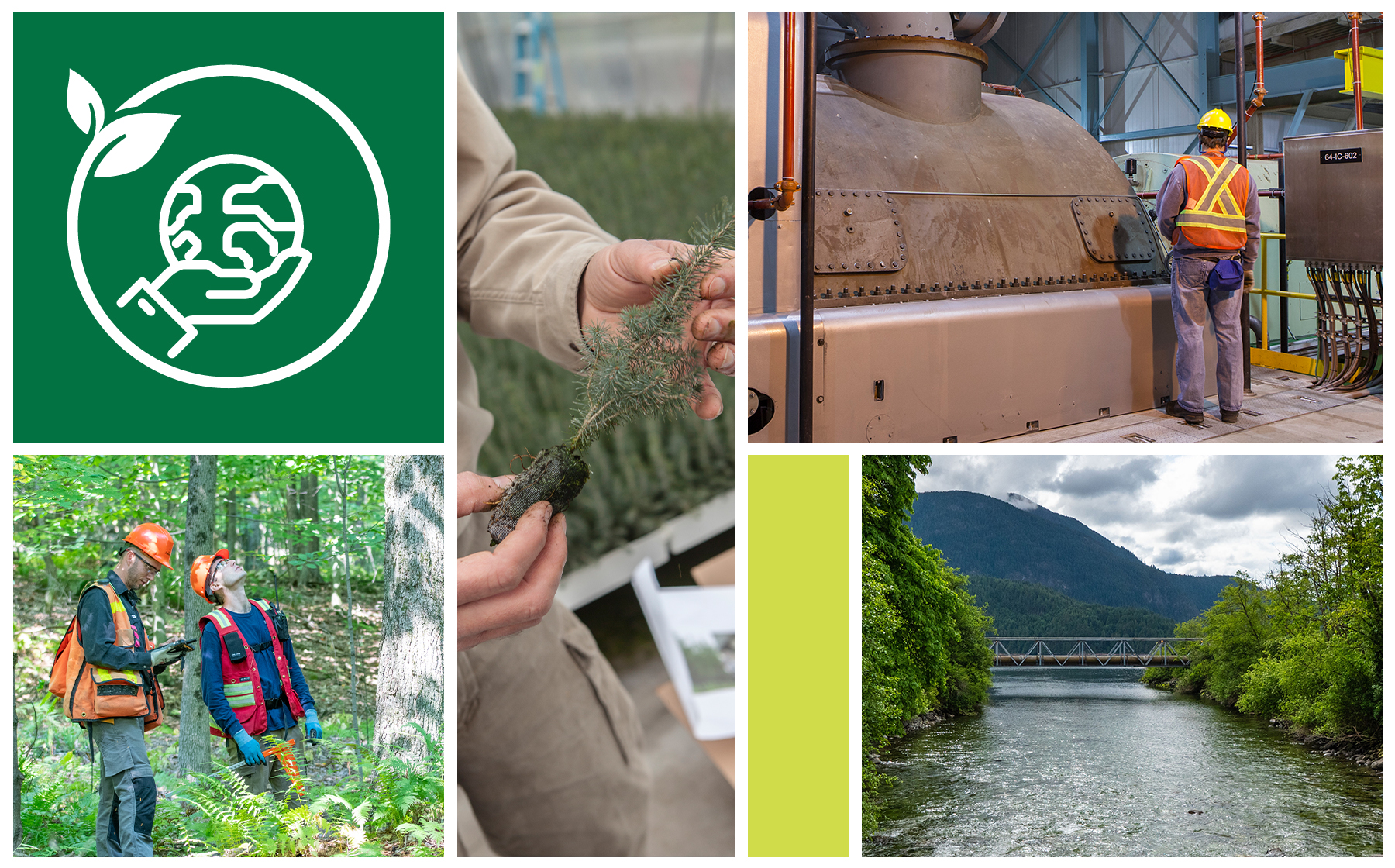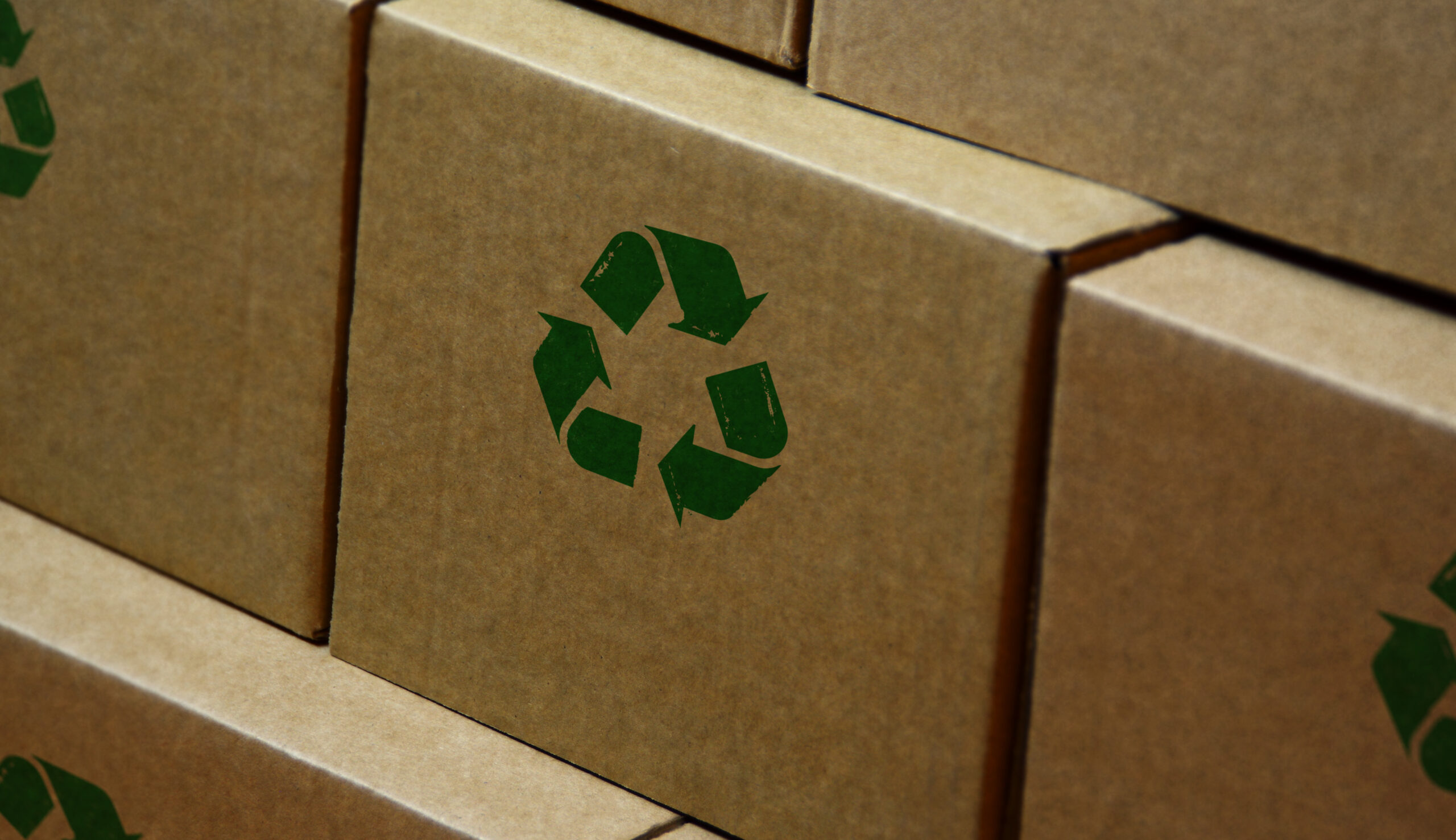This is the first of three articles introducing Domtar’s new Sustainability Strategy and its pillars: Environmental Stewardship, Our People and Communities, and Responsible Business.
How do we put sustainability at the heart of everything we do? It starts with our Sustainability Strategy, which focuses our efforts in three areas: Environmental Stewardship, Our People and Communities and Responsible Business.
The framework, which launched in May 2025, is the result of nearly two years of work, led by our Sustainability Team with the collective feedback of operational and subject matter experts across our business units. The integrated strategy drives all of our operations and commitments as we continue our work as a leading manufacturer of diversified forest products under the ownership of investor Jackson Wijaya.
“I’m tremendously proud of the strategy we’ve created,” says Domtar Chief Sustainability Officer Sabrina de Branco. “Considering the strong history of all our legacy companies, I can say with confidence that Domtar is moving onward and upward while being firmly rooted in sustainability.”
In this article, we’re exploring the first pillar in our strategy: Environmental Stewardship. Upcoming articles will explore the other two pillars and their key objectives.
What Is Environmental Stewardship?
Environmental Stewardship encompasses our efforts to steward the planet’s resources responsibly by reducing the environmental footprint of our everyday operations and setting actionable objectives that positively impact nature and the environment.
“In today’s world, our stakeholders and partners across all sectors are rightfully focused on environmental impact,” says Luc Thériault, president of Domtar’s Wood Products business unit. “For a company like ours that depends on renewable natural resources like wood fiber, this scrutiny isn’t just expected—it’s essential. Our environmental performance must be exemplary, which is why this pillar is fundamental to our strategy.”
This pillar includes four key objectives.
Sustainable Forest Management and Fiber Sourcing
Sustainable forest management and fiber sourcing are critical to our supply chain and the health of forests. We will advance our long-standing commitment to sustainable forest management across Domtar’s value chain for all wood and fiber. By 2030, we are committed to:
- Sourcing 100 percent of our wood and fiber from responsibly managed forests;
- Increasing landowner engagement from seed to harvest, compared to 2025, on practices that deliver social, environmental and economic value; and
- Ensuring Domtar is recognized as a collaborative partner in advancing the status of critical habitat for threatened species.
Positive Biodiversity Impacts
The health of our forests depends on having a healthy level of biodiversity, with an abundance and variety of life existing within the forest ecosystem. Maintaining or improving biodiversity requires an ongoing commitment to sustainable forestry practices and proactive measures to rehabilitate land when the opportunity arises. We will positively impact biodiversity through our forests, fiber supply chain and operational footprint.
By 2030, we will ensure that 100 percent of our operations with risks in high-value areas have action plans in place within one year of their completed assessments.
Decarbonization
Decarbonization—the reduction or removal of carbon dioxide emissions—is a critical pillar of global climate action and a key element of Domtar’s sustainability strategy. At Domtar, we are building on existing good practices and operational strengths to drive meaningful emission reductions across our value chain. This includes identifying and advancing strategic projects at our mills that lower our carbon footprint while safeguarding the long-term viability and competitiveness of our assets.
We’ve already reduced our greenhouse gas emissions by about 1/3 since 2015. We will continue to decarbonize our operations, products and value chain by leveraging renewable, sustainable, fossil-free resources and efficient manufacturing processes. We will achieve our greenhouse gas emission reduction target—to be established by 2026—for target year 2035 or sooner.
Water Resilience
Water is essential to the production of pulp, paper and wood products, and many of our facilities are located near rivers, lakes and watersheds to ensure access to this vital resource. Recognizing that water is a shared and precious natural resource, our goal is to reduce water-related risks and minimize our impact on local ecosystems by optimizing water use, improving treatment processes and collaborating with stakeholders to support watershed health.
Our 2030 targets for this objective include:
- Reducing water use intensity by 20 percent over 2020 baseline in the Paper and Packaging business unit.
- Ensuring 100 percent of our pulp, paper and tissue mills have risk mitigation plans in place within one year of completing assessments.
The Future of Our Environmental Stewardship
As we implement our sustainability strategy and work toward achieving our Environmental Stewardship objectives, we’re simply continuing the sustainability journey we started many years ago.
“We’re already engaged in several high-impact projects that we’re pursuing jointly with environmental non-governmental organizations and others. Certainly, our legacy companies had a strong track record of this type, and we’ve been moving further down this path as the new Domtar,” says Paige Goff, Domtar’s vice president of Sustainability, Strategic Partnerships and Engagement. “We’re looking to grow the number of partnerships and projects that we will engage in over time. And there’s perhaps no better overarching measure of the success of our strategy as a whole than the degree of trust we earn.”
Learn more:







